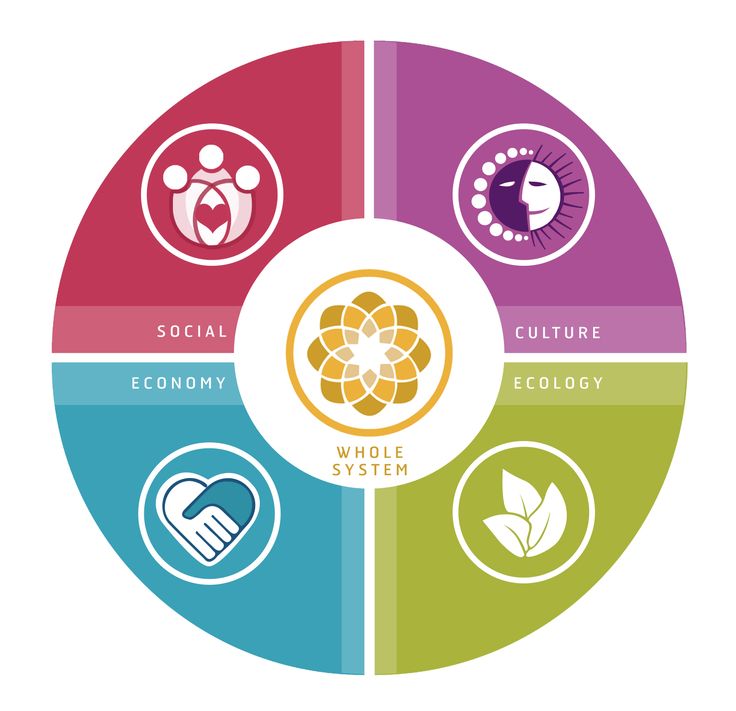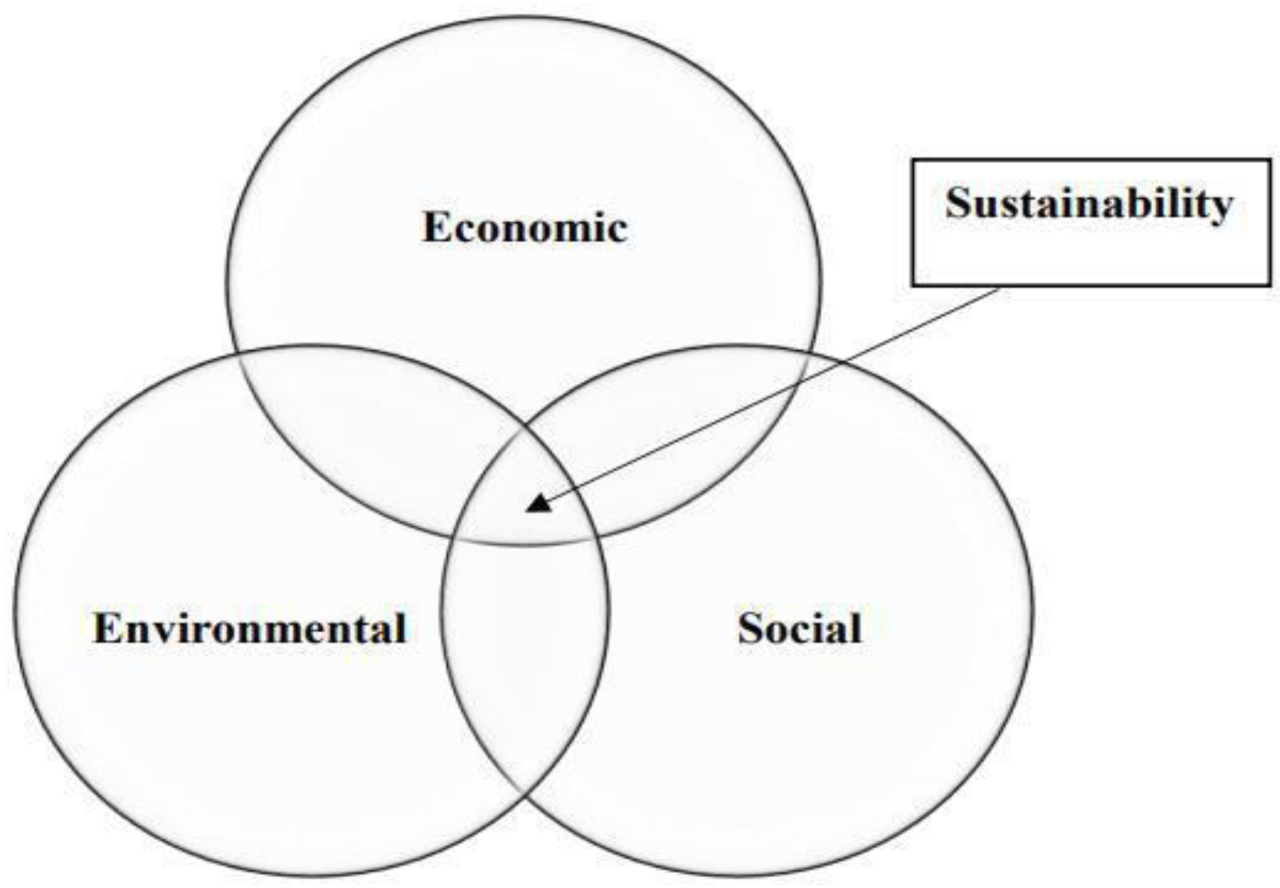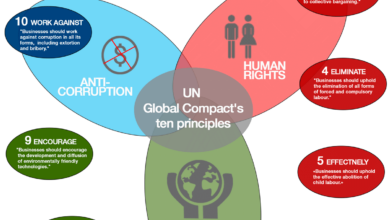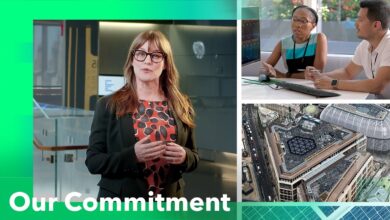
Sustainability A Holistic Perspective
Sustainability a holistic perspective recognizes the intricate web connecting environmental, social, and economic factors. It moves beyond isolated solutions to embrace a comprehensive understanding of how our actions ripple through these interconnected systems. This approach acknowledges that true sustainability requires considering the long-term consequences of our choices on all aspects of life.
This perspective delves into the core principles of a sustainable future, exploring how environmental challenges impact social equity and economic models. It examines the crucial role of governance and policy in achieving these goals, and examines case studies of successful initiatives. Ultimately, the discussion culminates in a look at the future of sustainability, including the role of emerging technologies and the integration of sustainability into diverse sectors.
Defining Holistic Sustainability
Holistic sustainability transcends the narrow focus on individual environmental, social, or economic issues. It recognizes the intricate web of interconnectedness between these spheres, acknowledging that true sustainability requires a comprehensive approach that considers the long-term consequences of our actions on all interconnected systems. This perspective necessitates a shift from treating these areas as isolated concerns to understanding them as integral parts of a larger, unified whole.Holistic sustainability acknowledges that environmental degradation, social injustice, and economic instability are not isolated problems but rather manifestations of a deeper, interconnected imbalance.
Addressing one aspect in isolation is insufficient; a holistic approach demands a simultaneous consideration of all three, recognizing that improvements in one area often depend on positive changes in the others. For example, sustainable agriculture practices can boost local economies (economic benefits), improve food security and reduce poverty (social benefits), and preserve biodiversity and ecosystem services (environmental benefits).
Interconnectedness of Factors in a Sustainable System
A sustainable system operates as an integrated whole, where environmental, social, and economic factors are mutually reinforcing. A healthy environment provides resources for a thriving society, which, in turn, supports a resilient economy. Conversely, economic activities can negatively impact the environment and social equity if not managed responsibly. The relationship between these three pillars is dynamic and complex, with feedback loops and interactions that shape the overall sustainability of the system.
For example, deforestation can lead to soil erosion, impacting agriculture and local livelihoods (economic and social consequences), while simultaneously reducing biodiversity and carbon sequestration capacity (environmental consequences).
Examples of Interconnected Aspects of Life and Sustainability
Sustainable consumption patterns are a prime example of interconnectedness. The demand for products often drives production processes, which in turn impact the environment through resource extraction, pollution, and waste generation. Socially, these patterns can perpetuate inequalities in labor practices and access to resources. Consequently, sustainable consumption requires considering the environmental footprint of products, the social conditions under which they are produced, and the economic implications for producers and consumers.
Similarly, sustainable urban planning considers the balance between infrastructure development (economic), community well-being (social), and environmental preservation (environmental).
Long-Term Consequences of Actions on Interconnected Systems
Ignoring the long-term consequences of our actions on interconnected systems can lead to cascading effects with detrimental impacts across all three pillars. For instance, unsustainable agricultural practices may initially increase short-term yields, but they can result in soil degradation, water scarcity, and loss of biodiversity in the long run. This impacts not only the environment but also local economies reliant on agriculture and the social well-being of communities.
Relationship Between Environmental, Social, and Economic Factors in a Sustainable Society
| Factor | Description | Impact on Other Factors |
|---|---|---|
| Environmental | Natural resources, biodiversity, ecosystem services | Healthy ecosystems provide resources and support social well-being; environmental degradation can impact livelihoods and economic activities. |
| Social | Equity, justice, well-being, community health | Social inequalities can hinder economic development and environmental protection; social cohesion fosters sustainable practices. |
| Economic | Sustainable growth, resource management, employment | Economic activities can strain the environment or exacerbate social inequalities if not managed sustainably; sustainable economies support environmental protection and social well-being. |
Environmental Sustainability in a Holistic Context

Embracing environmental sustainability demands a holistic perspective, recognizing the intricate web connecting ecosystems, human well-being, and societal structures. This approach moves beyond isolated environmental concerns to understand how environmental degradation ripples through social and economic systems. It acknowledges that environmental health is fundamentally intertwined with human prosperity and social equity.Environmental degradation often manifests as a cascade of interconnected problems.
Deforestation, for example, can lead to soil erosion, impacting agricultural productivity and food security, while also contributing to biodiversity loss and climate change. These interconnected consequences highlight the urgent need for a holistic approach that addresses the root causes of environmental challenges rather than treating symptoms in isolation.
Key Environmental Challenges
Environmental challenges are multifaceted and deeply interconnected. Climate change, biodiversity loss, pollution, and resource depletion are prominent examples, each with far-reaching consequences for human societies and ecosystems. Understanding the interdependencies between these issues is crucial to developing effective solutions.
- Climate Change: The increasing concentration of greenhouse gases in the atmosphere is causing global warming, leading to more frequent and intense extreme weather events, sea-level rise, and disruptions to ecosystems. This underscores the critical need for reducing emissions and adapting to the unavoidable impacts.
- Biodiversity Loss: The decline in plant and animal species is a serious threat to ecosystem health and human well-being. Habitat destruction, pollution, and climate change are major contributors to this alarming trend. Loss of biodiversity weakens ecosystem resilience and reduces the availability of natural resources.
- Pollution: Air, water, and land pollution pose significant risks to human health and the environment. Industrial emissions, agricultural runoff, and plastic waste are major contributors to pollution, disrupting ecosystems and impacting human health.
- Resource Depletion: Overexploitation of natural resources, including minerals, forests, and water, is depleting essential resources. Unsustainable practices often lead to environmental degradation and economic instability, with long-term consequences for future generations.
Interconnectedness of Ecosystems and Human Well-being
Ecosystems provide essential services that underpin human well-being, including clean air and water, pollination, and climate regulation. Protecting these systems is not merely an environmental concern; it’s a crucial component of human prosperity.
“Healthy ecosystems are essential for human well-being. They provide us with clean air and water, food, and resources.”
The degradation of ecosystems often has direct consequences on human health and social equity. For instance, water scarcity due to drought can exacerbate conflicts over resources and increase poverty. This interconnectedness underscores the importance of prioritizing ecosystem health for the betterment of society as a whole.
Examples of Environmental Degradation’s Impact, Sustainability a holistic perspective
Environmental degradation has far-reaching effects on social and economic systems. Deforestation, for instance, can lead to soil erosion, reducing agricultural productivity and increasing vulnerability to food insecurity. Pollution can contaminate water sources, impacting human health and disrupting aquatic ecosystems.
- Agriculture: Intensive agricultural practices often lead to soil erosion and water pollution, impacting food security and ecosystem health.
- Fisheries: Overfishing depletes fish stocks, disrupting marine ecosystems and threatening livelihoods dependent on fishing.
- Water Resources: Water scarcity due to climate change and unsustainable water management practices can lead to conflicts and economic hardship.
Holistic Approach to Prevent Future Crises
A holistic approach to environmental sustainability necessitates integrating environmental, social, and economic considerations. It involves recognizing the interconnectedness of these factors and developing solutions that address the root causes of environmental problems.
Thinking about sustainability from a holistic perspective means considering the whole picture, not just individual parts. A great example of this is the Stevens Points Breast Care Center receiving redesignation, which highlights the importance of community health initiatives. This redesignation shows how prioritizing quality care, like the excellent work being done at Stevens Points Breast Care Center , fits into a larger framework of sustainable practices that benefit everyone.
Ultimately, true sustainability involves interconnected well-being, from local healthcare to global environmental concerns.
Different Environmental Sustainability Approaches
| Approach | Focus | Strengths | Weaknesses |
|---|---|---|---|
| Linear Economy | Resource extraction, production, consumption, and disposal | Clear stages, easily measured outputs | Often unsustainable, creates waste, depletes resources |
| Circular Economy | Resource optimization, waste reduction, reuse, and recycling | Minimizes waste, maximizes resource use, reduces environmental impact | Requires significant changes in production and consumption patterns |
| Ecosystem-Based Management | Understanding and protecting ecosystems | Preserves biodiversity, supports ecosystem services | Requires long-term commitment and integrated planning |
Social Dimensions of Sustainability
A holistic view of sustainability recognizes that environmental concerns are intertwined with social well-being. Ignoring the social fabric of a community can lead to unsustainable practices, even if environmental impacts are seemingly addressed. A just and equitable society is crucial for long-term environmental health, as marginalized communities often bear the brunt of environmental degradation. This section explores the critical social dimensions of sustainability.
Social Equity and Justice in a Holistic Approach
Social equity and justice are fundamental to a holistic approach to sustainability. They ensure that the benefits and burdens of environmental action are distributed fairly. For example, renewable energy projects should not displace marginalized communities or increase their vulnerability to environmental hazards. A just transition strategy is essential to ensure that those dependent on unsustainable industries have opportunities to adapt and prosper in a sustainable economy.
This includes retraining programs, job creation in green sectors, and support for affected communities.
Social Structures and Institutions Influencing Sustainable Practices
Social structures and institutions significantly shape sustainable practices. Policies and regulations, such as environmental laws and zoning ordinances, influence how businesses and individuals interact with the environment. Cultural norms and values regarding resource use also play a crucial role. For instance, communities with strong traditions of communal resource management are often better positioned to adopt sustainable practices.
Furthermore, educational systems that promote environmental awareness and critical thinking can instill sustainable values in future generations.
Community Participation and Engagement in Sustainability Efforts
Community participation and engagement are vital for effective sustainability efforts. Involving local communities in decision-making processes ensures that projects reflect local needs and priorities. This approach fosters ownership and encourages long-term commitment to sustainable practices. For example, participatory design processes in community gardens or renewable energy projects often lead to more effective and equitable outcomes. Moreover, local knowledge and traditional ecological knowledge can be invaluable assets in developing sustainable solutions.
Examples of How Social Inequalities Hinder Sustainability Initiatives
Social inequalities often hinder sustainability initiatives. Disadvantaged communities may lack access to resources, information, or opportunities needed to adopt sustainable practices. For example, unequal access to clean water or sanitation can lead to unsustainable consumption patterns. Moreover, discriminatory practices in environmental policy can disproportionately affect marginalized communities, leaving them vulnerable to pollution or environmental hazards. Furthermore, unequal access to technology and education can prevent communities from adopting sustainable practices.
Social Impact of Different Sustainable Development Strategies
| Sustainable Development Strategy | Potential Positive Social Impacts | Potential Negative Social Impacts |
|---|---|---|
| Renewable Energy Transition | Creation of new jobs, economic development in rural areas, reduced health impacts from pollution, and improved energy access for marginalized communities. | Displacement of communities from land used for renewable energy projects, unequal distribution of economic benefits, and potential for social conflict over resource allocation. |
| Sustainable Agriculture | Improved food security, enhanced rural livelihoods, preservation of biodiversity, and reduced reliance on unsustainable agricultural practices. | Potential for land conflicts, displacement of smallholder farmers, and increased food prices if not implemented equitably. |
| Sustainable Consumption and Production | Reduced waste, improved resource efficiency, and promotion of circular economy models. | Potential for job losses in traditional industries, increased cost of goods, and unequal access to sustainable products. |
Economic Sustainability and its Holistic Implications
Economic sustainability isn’t just about maximizing profits; it’s about building resilient economic systems that can thrive alongside a healthy environment and equitable societies. A truly holistic approach recognizes the interconnectedness of economic activity with environmental protection and social well-being. This necessitates a shift from short-term gains to long-term value creation, considering the impact of our choices on future generations.A sustainable economy is one that can continue to operate and prosper without depleting natural resources or compromising the well-being of future generations.
Sustainability isn’t just about one thing, it’s a holistic approach. We need to consider everything from the materials we use to generate energy to the impact on our communities. The future of sustainable energy looks to alternative materials, like innovative composites and advanced polymers, to replace traditional resources, which is a critical part of that holistic picture. the future of sustainable energy looks to alternative materials Ultimately, a truly sustainable future hinges on a multifaceted approach that addresses environmental concerns, social equity, and economic viability.
It acknowledges that economic growth cannot be sustained if it comes at the cost of environmental degradation or social inequality. Therefore, policies and practices must be developed that integrate environmental and social considerations into economic decision-making.
Importance of Economic Systems Supporting Long-Term Sustainability
Effective economic systems are crucial for supporting long-term sustainability. These systems must promote resource efficiency, incentivize innovation for sustainable technologies, and encourage responsible consumption patterns. They must also provide opportunities for all members of society to participate in the economy, ensuring fair distribution of benefits. A strong emphasis on long-term value creation, rather than short-term profit maximization, is vital.
How Economic Policies Promote or Hinder Holistic Sustainability
Economic policies play a pivotal role in shaping the trajectory of sustainability. Policies that incentivize environmentally friendly practices, such as carbon taxes or subsidies for renewable energy, can promote holistic sustainability. Conversely, policies that prioritize short-term economic growth at the expense of environmental protection or social equity can hinder progress towards a truly sustainable future. Policies should aim to balance economic growth with environmental protection and social equity.
Role of Circular Economy Principles in Achieving Holistic Sustainability
Circular economy principles offer a powerful framework for achieving holistic sustainability. By emphasizing resource reuse, reduction, and recycling, circular economies minimize waste and environmental impact. They create new business opportunities, promote innovation, and foster economic resilience. The transition to a circular economy requires a shift in thinking from a linear “take-make-dispose” model to a cyclical model that emphasizes reuse, repair, and regeneration.
“A circular economy is restorative and regenerative by design; it aims to keep products, components, and materials at their highest utility at all times, distinguishing it from a linear economy which is about the extraction, production, and consumption of resources and waste.”
Ellen MacArthur Foundation
Sustainability isn’t just about recycling; it’s a holistic view encompassing everything from clean energy to healthy ecosystems. A great example of this holistic approach is evident in the work of sustaining our waters the fox wolf watershed alliance , which focuses on the intricate relationships within a watershed to ensure the long-term health of our waterways.
Ultimately, a true understanding of sustainability needs to recognize these interconnected systems to build a more resilient and balanced future for all.
Examples of Economic Models Prioritizing Sustainability over Short-Term Gains
Several economic models prioritize sustainability over short-term gains. These models often emphasize social equity and environmental protection as integral parts of economic development. The concept of “green GDP,” which adjusts traditional GDP figures to account for environmental damage, exemplifies this shift. Another model is the “steady-state economy,” which aims to maintain a stable level of resource use and consumption.
These models recognize the finite nature of resources and the importance of long-term well-being.
Comparison of Economic Models for Sustainable Development
| Economic Model | Focus | Sustainability Implications | Strengths | Weaknesses |
|---|---|---|---|---|
| Traditional Economic Growth | Maximizing short-term economic output | High environmental impact, social inequality | Historically high productivity and job creation | Resource depletion, pollution, and social unrest |
| Green GDP | Adjusting GDP to account for environmental damage | Improved environmental accounting, incentives for sustainable practices | More accurate measure of economic progress | Requires robust environmental data, potential for manipulation |
| Steady-State Economy | Maintaining a stable level of resource use | Resource conservation, social equity | Potential for long-term stability | May hinder economic growth in traditional terms |
| Circular Economy | Resource reuse, reduction, and recycling | Minimized waste, maximized resource efficiency | Innovation and new business opportunities | Requires significant changes in production and consumption patterns |
Governance and Policy for Holistic Sustainability
Effective governance and robust policy frameworks are crucial for translating holistic sustainability goals into tangible actions. They provide the structure and incentives needed to integrate environmental, social, and economic considerations into decision-making processes at all levels, from local communities to international organizations. Without clear guidelines and enforcement mechanisms, well-intended strategies can fall short of achieving their objectives.Holistic sustainability requires a shift from siloed approaches to integrated strategies.
Governance plays a pivotal role in coordinating diverse stakeholders and ensuring that policies address the interconnectedness of environmental, social, and economic systems. Policies must be adaptive, responsive to evolving challenges, and capable of fostering innovation and collaboration across sectors.
Role of Governance in Implementing Holistic Sustainability Strategies
Governance structures, at all levels, are essential to enacting holistic sustainability strategies. Effective governance facilitates the integration of environmental, social, and economic considerations into decision-making processes, promoting collaboration and accountability. This involves establishing clear roles and responsibilities, fostering transparency, and ensuring public participation. Strong governance mechanisms are critical for creating a supportive environment for businesses and individuals to adopt sustainable practices.
Examples of Effective Policy Frameworks that Promote Sustainability
Numerous policy frameworks have demonstrated success in promoting sustainability. Carbon pricing mechanisms, such as carbon taxes or cap-and-trade systems, incentivize emissions reductions. Regulations mandating energy efficiency standards for buildings and transportation reduce resource consumption. Sustainable land-use policies and protected areas safeguard biodiversity and ecosystems. The success of these policies hinges on their comprehensiveness, enforcement, and adaptation to evolving needs.
Importance of International Cooperation in Addressing Global Sustainability Challenges
Global sustainability challenges, such as climate change and biodiversity loss, transcend national borders. Effective solutions require international cooperation to share knowledge, coordinate actions, and mobilize resources. International agreements, like the Paris Agreement on climate change, provide a platform for nations to collaborate on shared objectives. Effective implementation depends on strong commitments from participating countries and consistent monitoring and reporting.
Significance of Stakeholder Engagement in Creating Sustainable Policies
Sustainable policies must be informed by and responsive to the needs and concerns of all stakeholders. This includes communities, businesses, governments, and civil society organizations. Engaging stakeholders in the policy-making process ensures that policies are relevant, equitable, and widely supported. Open dialogue and participatory approaches are critical for building consensus and ensuring long-term buy-in.
Key Components of a Comprehensive Sustainability Policy
| Component | Description |
|---|---|
| Vision and Goals | Clearly defined long-term aspirations and measurable targets for environmental, social, and economic sustainability. |
| Policy Objectives | Specific and actionable steps to achieve the defined goals, outlining the desired outcomes and responsibilities of different stakeholders. |
| Implementation Strategies | Detailed plans for putting the policy into action, including timelines, budgets, and resource allocation. |
| Monitoring and Evaluation | Mechanisms for tracking progress, assessing the effectiveness of the policy, and adapting strategies as needed. Regular reporting and feedback loops are vital. |
| Enforcement and Accountability | Clear procedures for enforcing the policy, ensuring compliance, and holding accountable those who violate the regulations. |
| Stakeholder Engagement | Mechanisms for involving and consulting with all relevant stakeholders, from local communities to international organizations. |
Case Studies in Holistic Sustainability

Exploring real-world examples of successful holistic sustainability initiatives offers valuable insights into the practical application of the principles discussed. These case studies reveal the interplay between environmental, social, and economic factors, highlighting the interconnectedness crucial for achieving lasting positive change. Learning from successful implementations, as well as identifying challenges encountered, allows for a more nuanced understanding of the path toward holistic sustainability.Holistic sustainability initiatives, by definition, integrate environmental, social, and economic considerations.
Case studies provide concrete examples of how these diverse elements can be successfully interwoven, showcasing the positive outcomes of a multi-faceted approach. Analyzing these examples allows us to better understand the key factors driving success and the challenges that need to be overcome.
Successful Holistic Sustainability Initiatives
Numerous initiatives across diverse contexts demonstrate the feasibility of holistic sustainability. Successful examples illustrate the power of integrated approaches, showing that sustainable practices can be both profitable and beneficial to society.
- The transition to renewable energy sources in several countries, like Denmark and Costa Rica, often involves community engagement, incentivizing local participation, and creating local jobs. This model exemplifies the interconnectedness of economic, social, and environmental benefits. For instance, Denmark’s wind power industry has fostered significant economic growth while reducing reliance on fossil fuels, and Costa Rica’s commitment to renewable energy has resulted in improved air quality and a strengthened national identity.
- Community-based ecotourism initiatives in developing nations frequently prioritize conservation efforts while simultaneously empowering local communities. These programs often involve training local guides, establishing sustainable revenue streams, and creating awareness about the value of natural resources. For example, initiatives in Costa Rica and Nepal have fostered community pride and economic independence, alongside environmental preservation.
- Sustainable urban development projects in cities like Curitiba, Brazil, have integrated various elements like public transportation, green spaces, and waste management systems. These programs highlight the importance of designing cities that are both environmentally friendly and socially equitable. Curitiba’s success story underscores how urban planning can support a holistic approach, improving air quality and creating vibrant communities.
Key Factors Contributing to Success
Successful holistic sustainability initiatives often share common characteristics. These factors are crucial for the long-term viability of such initiatives.
- Strong leadership and political will are essential for establishing clear goals, allocating resources, and ensuring policy support for sustainable development. Strong commitment from leadership and governments is fundamental to overcoming opposition and fostering a supportive environment for these projects.
- Public-private partnerships are frequently beneficial for mobilizing resources and expertise. Collaborations between the public sector and private enterprises can help bridge the gap between innovation and implementation, creating shared responsibility and maximizing impact.
- Community engagement and participation are vital for ensuring that the needs and perspectives of all stakeholders are considered. Community involvement ensures the initiatives are responsive to local contexts and have lasting impact. This involves ensuring that the benefits of sustainability are shared equitably within the community.
Challenges in Implementing Holistic Sustainability Strategies
Despite the potential benefits, implementing holistic sustainability strategies faces various challenges. These obstacles are often complex and require comprehensive solutions.
- Overcoming entrenched interests and resistance to change is frequently a significant hurdle. Existing economic systems and vested interests may oppose shifts towards sustainability, creating barriers to implementing transformative policies.
- Lack of resources, both financial and human, often hinders the successful implementation of ambitious sustainability goals. Adequate funding and skilled personnel are crucial for the successful execution of these projects.
- Measuring the multifaceted impacts of sustainability initiatives can be complex. Traditional metrics may not fully capture the social and environmental impacts, making it difficult to track progress and assess effectiveness.
Table of Successful Case Studies
| Case Study | Context | Key Factors for Success | Challenges Faced |
|---|---|---|---|
| Denmark’s Transition to Renewable Energy | National energy policy | Strong political will, public-private partnerships, supportive regulations | Overcoming initial costs, ensuring long-term energy security |
| Community-Based Ecotourism in Costa Rica | Developing nations | Community engagement, sustainable revenue streams, conservation efforts | Maintaining ecological balance, ensuring equitable distribution of benefits |
| Sustainable Urban Development in Curitiba, Brazil | Urban planning | Integrated urban planning, public transportation, green spaces | Maintaining momentum, adapting to growing populations |
Future of Holistic Sustainability: Sustainability A Holistic Perspective

The pursuit of holistic sustainability is no longer a futuristic dream but a pressing global imperative. Navigating the complex interplay of environmental, social, and economic factors requires a forward-thinking approach, recognizing that future challenges demand innovative solutions and a paradigm shift in our collective mindset. The path forward requires not just incremental improvements but a fundamental reimagining of how we interact with the planet and each other.
Emerging Trends and Challenges
The future of holistic sustainability faces numerous emerging trends and challenges. Technological advancements, while offering potential solutions, also present new dilemmas, like the ethical implications of artificial intelligence or the environmental impact of rapid industrialization. Resource depletion, climate change, and social inequalities are exacerbating existing vulnerabilities, highlighting the urgent need for integrated and proactive solutions. The increasing global population, coupled with changing consumption patterns, puts immense pressure on resources and ecosystems, necessitating a global shift towards more sustainable practices.
Role of Technology and Innovation
Technology plays a pivotal role in driving sustainable practices. From renewable energy sources like solar and wind power to advancements in energy storage and smart grids, technology offers concrete solutions to address environmental concerns. Innovations in agriculture, like precision farming and vertical farming, can enhance resource efficiency and food security. Furthermore, digital tools can facilitate waste reduction, optimize resource management, and improve supply chain transparency, promoting more sustainable business practices.
Potential Solutions to Future Sustainability Challenges
Addressing future sustainability challenges requires a multi-faceted approach. Transitioning to renewable energy sources, implementing circular economy models, and fostering sustainable consumption patterns are crucial steps. Strengthening global cooperation, investing in research and development, and promoting education and awareness are vital components of a comprehensive solution. Encouraging responsible business practices and incentivizing sustainable investments can catalyze positive change across sectors.
Integrating Sustainability into Different Sectors
Integrating sustainability into diverse sectors is essential for achieving holistic sustainability. The transition to sustainable practices requires a shift in mindset across all industries, from agriculture and manufacturing to finance and tourism. Promoting sustainable agriculture practices, developing sustainable manufacturing processes, and designing eco-friendly products are key steps. Investing in sustainable infrastructure, promoting sustainable transportation, and designing resilient cities are critical aspects of integrating sustainability into urban planning.
Emerging Technologies for Holistic Sustainability
| Technology | Description | Holistic Sustainability Impact |
|---|---|---|
| Vertical Farming | Growing crops in vertically stacked layers, often in controlled environments. | Reduces land use, minimizes water consumption, and potentially increases crop yields in urban areas. |
| 3D Printing | Creating objects by adding layers of material. | Reduces material waste, enables customized designs, and can be used for construction of sustainable materials. |
| Bioplastics | Biodegradable plastics derived from renewable resources. | Reduces reliance on fossil fuels, lowers plastic pollution, and promotes a circular economy. |
| Smart Grids | Electrical grids that use digital technologies to optimize energy distribution and consumption. | Improves energy efficiency, integrates renewable energy sources, and enhances grid resilience. |
| Precision Agriculture | Using technology to optimize resource use in agriculture, such as targeted pesticide application and irrigation. | Reduces environmental impact, increases yields, and conserves resources. |
Wrap-Up
In conclusion, a holistic approach to sustainability is not merely an ideal; it’s a necessity. By understanding the interconnectedness of environmental, social, and economic systems, we can create a future where prosperity and well-being are interwoven with environmental stewardship. This journey towards a sustainable future demands collaboration, innovation, and a profound commitment to long-term thinking.






